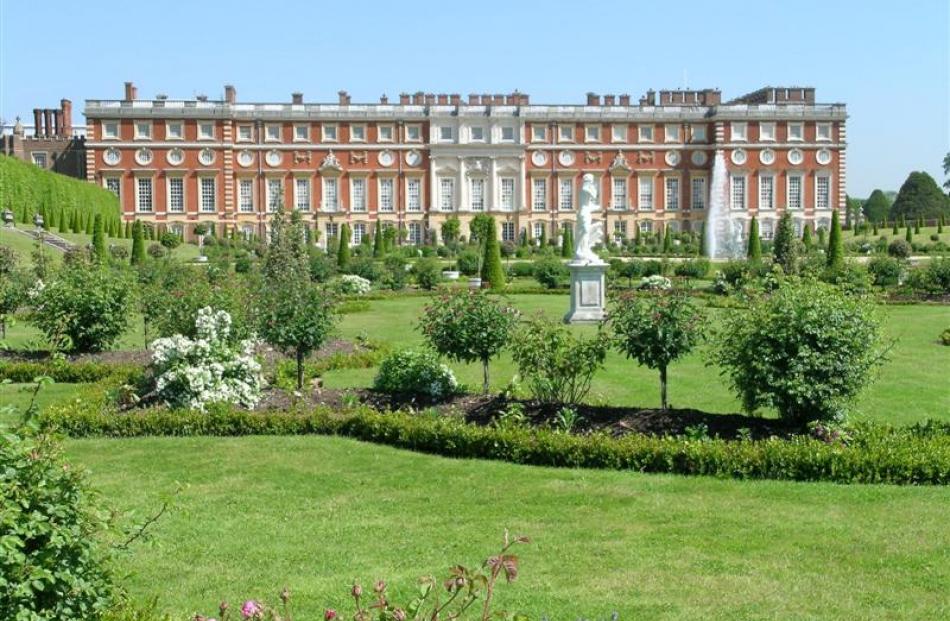Looking at other people's gardens is a pleasurable activity. Gillian Vine reflects on ways to get the most out of garden visits.
I love seeing other people's gardens and if I'm on holiday, garden visits are high on the list of things to do.
I'm not alone in this: after golf, garden visiting is the world's biggest specialist tourism activity, with many companies offering garden tours centred on such events as London's Chelsea Flower Show.
Garden touring need not mean an overseas trip, as many fine New Zealand gardens open their gates to the public, usually from spring to autumn, with special events in clusters.
During the Taranaki Rhododendron and Garden Festival, for example, more than 60 gardens are open.
This year the festival runs from October 31 to November 9.
Closer to home, brochures of open gardens are produced by organisations such as the Dunedin Open Garden Scheme, Southland Festival of Gardens and Maniototo Garden Club.
Churches and schools often have one-day open garden days and for gathering ideas, these may be more appropriate than trying to replicate at home things seen in San Francisco or Suzhou.
There is no doubt that seeing what others have done can give inspiration or demonstrate a way to solve a problem.
In my case, I couldn't work out what to do about the roots of an old tree lying close to the surface of the lawn.
They were skinned every time the lawn was mowed and looked ugly.
The obvious solution was planting between the roots.
But what? Then, on an open garden day, I visited a Clinton property where a similar problem was solved by putting in native grasses.
I couldn't copy the idea fast enough.
Tips for visiting
• Talking to owners is useful as they can tell you what plants thrive in which situations and also what has been disastrous for them.
Try not to hog too much of their time, though, if others are waiting their turn to chat.
• Many gardens are open without charge; at others there is a small payment - often less the price of a cup of coffee - and gardeners put out honesty boxes for this, so do pay up.
When you reflect that overseas charges can be $10 or $12 for an indifferent garden and $30 or more for a famous property, we do very well indeed.
• People are generous in opening their gardens, as it involves lots of extra work, planning, planting, weeding and mowing, so don't point out the one weed missed in half an acre.
Don't lift labels out of the ground, as it is all too easy to put them back in the wrong place, a recipe for confusion.
Instead, ask the gardener what the plant is and take a small pad and pen to write down the names of things that take your fancy.
• Away from home, the choice of open gardens can be daunting.
In Britain, for example, 3500 gardens are listed in the Yellow Book, the National Garden Schemes handbook.
There are hundreds, if not thousands, of other properties open to the public, so the question for the visitor is where to begin.
Start by getting an overview by talking to people who have been there and reading as much as you can. Draw up a wish list, then map the locations.
Now get brutal: strike off gardens outside the main areas you expect to visit, then look at the remainder with a critical eye, ranking them according to priority.
• Pause in this enjoyable pursuit to sign up for membership of the New Zealand Historic Places Trust, as this gives free entry into all National Trust properties in the United Kingdom and Jersey.
The NZHPT has similar arrangements in Australia, where almost 200 properties are open to the public, Japan and several other countries.
You will save your $50 subscription ($35 if you are retired) by the time you've visited three or four gardens.
Also worth considering is a Great British Heritage Pass, which costs from 30 ($78) for a four-day adult pass to 79 for 30 days.
The pass gives unlimited access to almost 600 non-National Trust properties, such as Hampton Court Palace (usual admission charge 13.30) and the Royal Botanic Gardens, Kew (admission 13).
For details, check the website www.visitbritain.com/heritagepass.
• As with any tourism activity, doing your homework saves time and money, and adds to the enjoyment, so go back to your list and decide when is the best time to visit.
Many gardens are closed in the winter, while others are best for a limited period.
Be aware, too, that flowering times vary considerably.
A month after the spring flowers of southern England have disappeared, Scotland is bright with bluebells and rhododendrons.
• Most importantly, check opening days and times.
Many properties close on Mondays and opening times can change at short notice.
Check websites or telephone the day before, as nothing is more frustrating to use an outdated guide, as I did, and turn up at a famous garden, only to find it closed.
• Try to arrive a few minutes before opening time, before the coach tours, or go in late afternoon, after they have left.
• Finally, don't try to cram too much into one day.
I confess: in this regard, I do not practise what I preach, especially when it comes to those fund-raising local garden tours when no sane person would try to get around eight properties in an afternoon.
I'm the one trying to see them all, the camera-toting woman trotting around at high speed who suddenly stops and drops to her knees to get a picture of an unusual or especially lovely plant.
And with the prospect of more to see in a couple of months, I can't wait for spring.

















